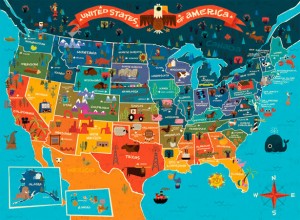 At the Atlantic, Andy Horwitz asks ‘Who should pay for the arts in America?‘ He is specifically asking about nonprofit arts, whose funding comes from paying customers, donors and other sponsors, and the public sector. He observes:
At the Atlantic, Andy Horwitz asks ‘Who should pay for the arts in America?‘ He is specifically asking about nonprofit arts, whose funding comes from paying customers, donors and other sponsors, and the public sector. He observes:
The current state of the arts in this country is a microcosm of the state of the nation. Large, mainstream arts institutions, founded to serve the public good and assigned non-profit status to do so, have come to resemble exclusive country clubs. Meanwhile, outside their walls, a dynamic new generation of artists, and the diverse communities where they live and work, are being systematically denied access to resources and cultural legitimation.
What can be done? Horwitz champions the National Endowment for the Arts. However,
the ethos upon which the NEA was founded—inclusion and community—has been eroded by consistent political attack. As the NEA’s budget has been slashed, private donors and foundations have jumped in to fill the gap, but the institutions they support, and that receive the bulk of arts funding in this country, aren’t reaching the people the NEA was founded to help serve. The arts aren’t dead, but the system by which they are funded is increasingly becoming as unequal as America itself.
Despite the noble rhetoric at its founding, it may well be the case that arts funding is reaching exactly the people it was founded to serve – patrons of the ‘high’ arts. But let’s put aside trying to figure what President Johnson really meant in 1965 at the NEA’s founding, and ask a more pragmatic question: what should we do now?
Horwitz provides solid statistics for what we intuitively know – that charitable donations mostly go to the arts organizations that are already the very richest. This is true of philanthropy in America across the board: Ivy League universities are not only the richest in terms of accumulated endowments, but also lead the charts in current donations, when the marginal impact of dollars are likely much higher at smaller, poorer, but well-run schools. The problem is exacerbated by the richest donors receiving a larger per-dollar tax subsidy for their donations than those in lower tax brackets, or who fail to itemize donations at all. Subsidy for the arts through tax-funded public arts councils can ensure that funds go to worthy companies and artists that might not be on the radar of donors, at least not yet. To this point I am fully on board with Horwitz.
But how to achieve this? Here is where we part ways. It’s true that the National Endowment for the Arts has great value, in terms of being a national advocate for the arts, in all its scope and diversity, and for giving national recognition for those who have made real difference in the cultural world. But if we were to devote increased funds for arts organizations and artists through public funding, would the NEA be the best place to do it? (of course, if we did want funding for individual artists, the NEA gave that up long ago). Why not direct increased funds to the local level? As Horwitz reminds us, the NEA already allocates 40% of its budget to state and regional arts councils (it doesn’t get a choice in the matter). Would we want increased grants to organizations to go through the NEA, or should funding go directly to state and local councils?
Horwitz writes:
Like Medicare, Social Security, and other Great Society initiatives, the NEA has long been under attack by conservatives who are ideologically opposed to an empowered central government. And in much the same way that opponents of the Affordable Care Act inveigh against socialized medicine and characterize government-run health care as incompetent and failure-prone, so too people dismiss the significant accomplishments of the NEA.
But Medicare (or the ACA) and Social Security are different. Policies that, as one voter complained during a Presidential election, ‘redistribute the wealth’, like public health insurance, pensions, and progressive income taxation, are indeed best accomplished at the federal level. This is a long-known point in the economics of federalism: local and state governments are restricted in the degree they can try to accomplish redistributive policies, because the locality that tries to become increasingly redistributive will find the rich starting to move to other jurisdictions, and the poor being attracted in. The federal government doesn’t face that problem, because the number of rich who will move out of the country should tax rates on them rise a few points is very, very small.
But local governments are best at administering programs that mostly serve local residents: city streets and county roads, police, social services, and, I would argue, the arts. This is a big country, and local councils are well-placed to know what residents would enjoy in the arts, where there are opportunities, and what goals of arts funding the community has that might be different from another town down the road.
I value what the NEA does, and when we see unfair attacks by politicians looking for an easy target, our instinct is to rise to its defense.
But consider this thought experiment: suppose you were given a choice, and $300 million in additional funds could go to the NEA for its programs, or be distributed across the country to local arts councils for their programs. I know what I think would have the better outcome.

Leave a Reply